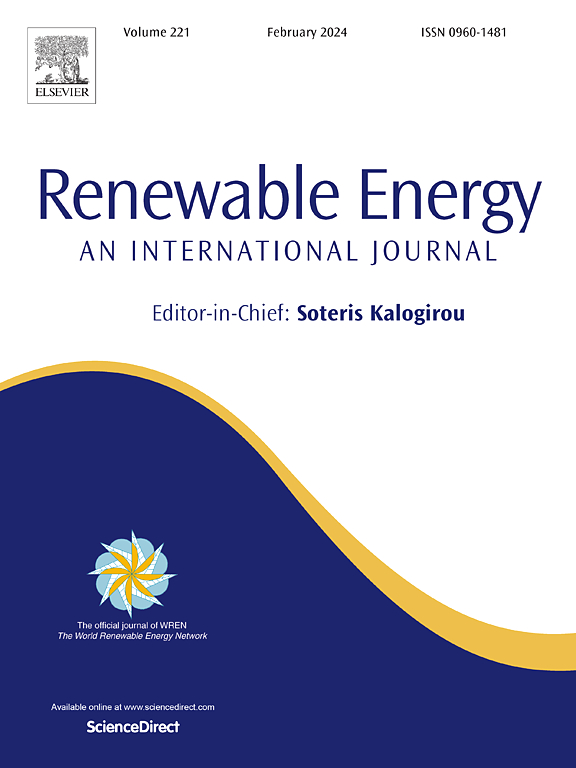提高熔盐电加热器温度分布均匀性的策略:运行参数的综合优化
IF 9.1
1区 工程技术
Q1 ENERGY & FUELS
引用次数: 0
摘要
熔盐蓄热技术近年来在火电系统的柔性改造和可再生能源的消纳方面得到了广泛的应用。熔盐电加热器(MSEHs)是蓄热系统中热电解耦的关键部件。然而,MSEHs容易局部过热,并且缺乏在可变条件下调整运行参数的有效方法。研究建立了MSEHs的耦合模型,以优化对流换热性能和运行参数。结果表明,低加热功率显著缓解了过热。此外,该研究还揭示了在低流速下浮力效应如何起主导作用,导致严重过热,最高温度达到657.72°C。建立了基于修正瑞利数的MSEHs混合对流起始判据。此外,还推导了MSEH流动和传热特性的经验公式,无需复杂的测量即可实现性能预测。最后发现,在相同温升条件下,较低的流量和电加热功率下,MSEH具有较好的温度均匀性,最高温度降至573.85℃。建立了MSEH最高温度预测神经网络模型,为MSEH变工况下的实时运行优化提供了重要依据。本文章由计算机程序翻译,如有差异,请以英文原文为准。
Strategy for improving temperature distribution uniformity in molten salt electric heaters: comprehensive optimization of operating parameters
Molten salt thermal storage technology has been widely applied in recent years for the flexible transformation of thermal power systems and consumption of renewable energy. Molten salt electric heaters (MSEHs) serve as key components of thermal-electrical decoupling in thermal storage systems. However, MSEHs are prone to local overheating and lack effective methods for adjusting operating parameters under variable conditions. The study developed a coupling model for MSEHs to optimize convective heat transfer performance and operating parameters. The results revealed that low heating power significantly alleviated overheating. Moreover, the study revealed how buoyancy effects dominate at low flow rates, leading to severe overheating and a maximum temperature of 657.72 °C. And the criterion based on the modified Rayleigh number for mixed convection onset of MSEHs was established. Additionally, empirical formulas for the MSEH flow and heat transfer characteristics were derived, enabling performance prediction without complex measurements. Finally, it was found that MSEH exhibited better temperature uniformity at lower flow rates and electric heating power under the same temperature rise conditions, with the maximum temperature reduced to 573.85 °C. And a neural network model predicting max temperature of MSEH was developed, providing a critical basis for real-time operational optimization under variable conditions.
求助全文
通过发布文献求助,成功后即可免费获取论文全文。
去求助
来源期刊

Renewable Energy
工程技术-能源与燃料
CiteScore
18.40
自引率
9.20%
发文量
1955
审稿时长
6.6 months
期刊介绍:
Renewable Energy journal is dedicated to advancing knowledge and disseminating insights on various topics and technologies within renewable energy systems and components. Our mission is to support researchers, engineers, economists, manufacturers, NGOs, associations, and societies in staying updated on new developments in their respective fields and applying alternative energy solutions to current practices.
As an international, multidisciplinary journal in renewable energy engineering and research, we strive to be a premier peer-reviewed platform and a trusted source of original research and reviews in the field of renewable energy. Join us in our endeavor to drive innovation and progress in sustainable energy solutions.
 求助内容:
求助内容: 应助结果提醒方式:
应助结果提醒方式:


